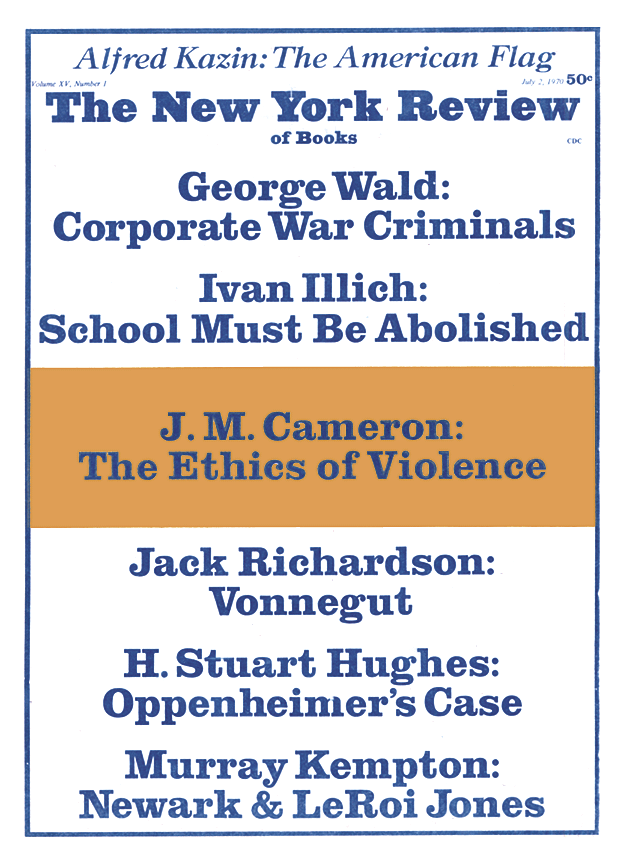In response to:
Your Move from the May 21, 1970 issue
To the Editors:
…In general I think [your] reviewer [D.W. Harding on Anatol Rapoport, NYR, May 21] misconceives the nature of game theory. The role of the game theorist is much the same as that of the Cheshire cat in Alice in Wonderland; he declined to suggest the road Alice should take until he learned where she wished to go. Game theory never prescribes that a player act competitively—it only tells those who want to how to go about it. (Incidentally, a game is zero-sum—in terms of utilities—because the players are competitive; the players don’t become competitive as a consequence of its being zero-sum.)
The other “path” taken by Harding which “starts with the recognition that there may be good will as well as rivalry between people and between nations” is actually the well-known garden path. It is all the same to the theory whether the player is hostile, compassionate, or some complex mixture of the two. The theory takes the players’ attitudes as given and goes on from there; it does not try to resolve these attitudes into their component parts. Applying the theory is another matter; there, you must first decide if the shoe fits (that is, if the attitudes of the hypothetical players are the same as those of the actual players), and if it does you wear it.
Morton D. Davis
Department of Mathematics
City College
City University of New York
D.W Harding replies:
Dr. Davis’s letter reiterates what he says in his book: “…players don’t look to game-theorists for moral principles, they already have their own. All they ask is to find a strategy that will suit their purpose, selfish or otherwise.” Since I quoted that in my review I can hardly have supposed that game theory intends to be morally prescriptive. But it can still conceal moral assumptions, if only by restricting the range of behavior to which it attends. Notably it neglects, I suspect necessarily, the kind of conflict which is treated as a learning situation by both “players,” each or either of whom may revise his utilities as a result of learning in face of the problem. This must happen, for example, in almost any marriage that achieves stability without sacrificing honesty of relationship. It is the possibility which in the hopeful Thirties was discussed as “constructive conflict” by Mary Parker Follett and as “integrative behavior” by H. H. Anderson of Michigan State College. (Dr. Davis does mention in his book the possibility of preferences changing as a situation progresses, but he mentions it as a difficulty without indicating a solution in game theory.)
Again, Dr. Davis criticizes Dr. Rapoport’s effort to find a rational justification for cooperative behavior in a one-trial version of prisoner’s dilemma. Rapoport bases himself on the supposed social nature of the participants, but Davis rules this out, arguing that it would dissolve the dilemma:
If a player is as concerned with his partner’s pay-off as he is with his own, the game isn’t a prisoner’s dilemma; and if each player is interested solely in his own pay-off, Rapoport’s comments aren’t pertinent.
The implication seems to be, for Dr. Davis, that a conflict situation in which one player feels concern for the other as well as for himself (and therefore has inner conflict) is not suitable for the attention of game theorists. Certainly their examples are virtually all drawn from situations in which the simplest self-interest on both sides is assumed. If subtler motivation could be admitted game theory would have a more significant bearing on social relations. It is clear that Dr. Davis is much more confident than Dr. Rapoport that game theory can be insulated from “moral” problems, just as he is much more confident than Dr. Rapoport about its practical usefulness to those who want to win “games.”
This Issue
July 2, 1970


